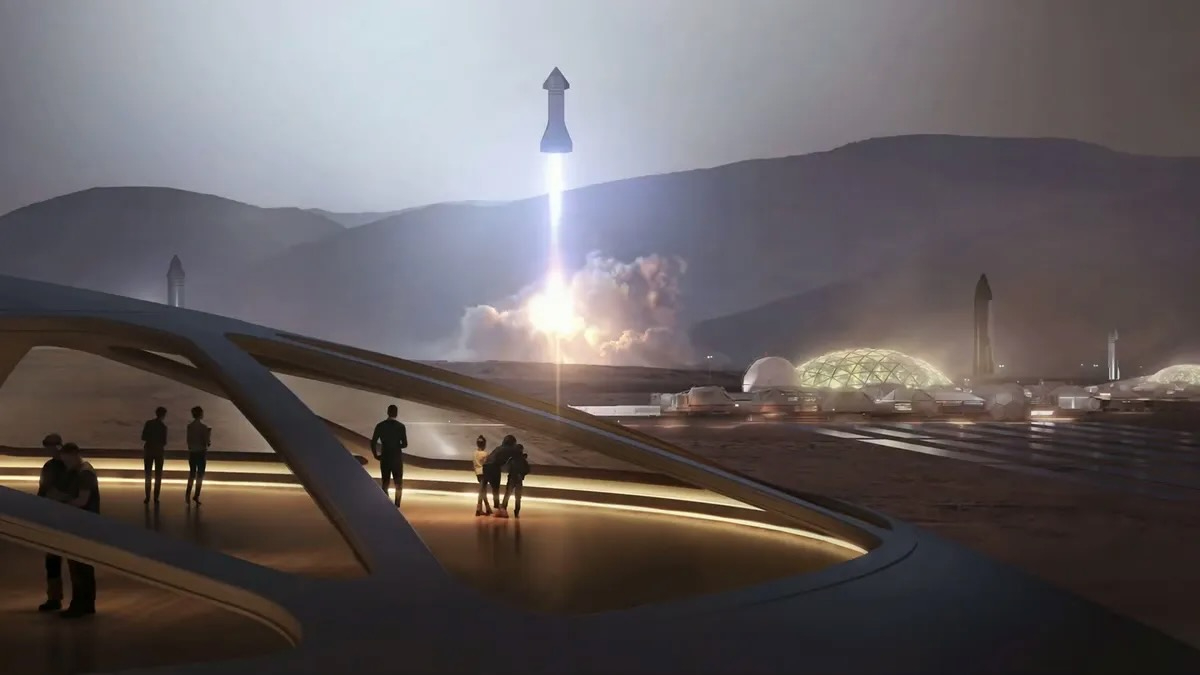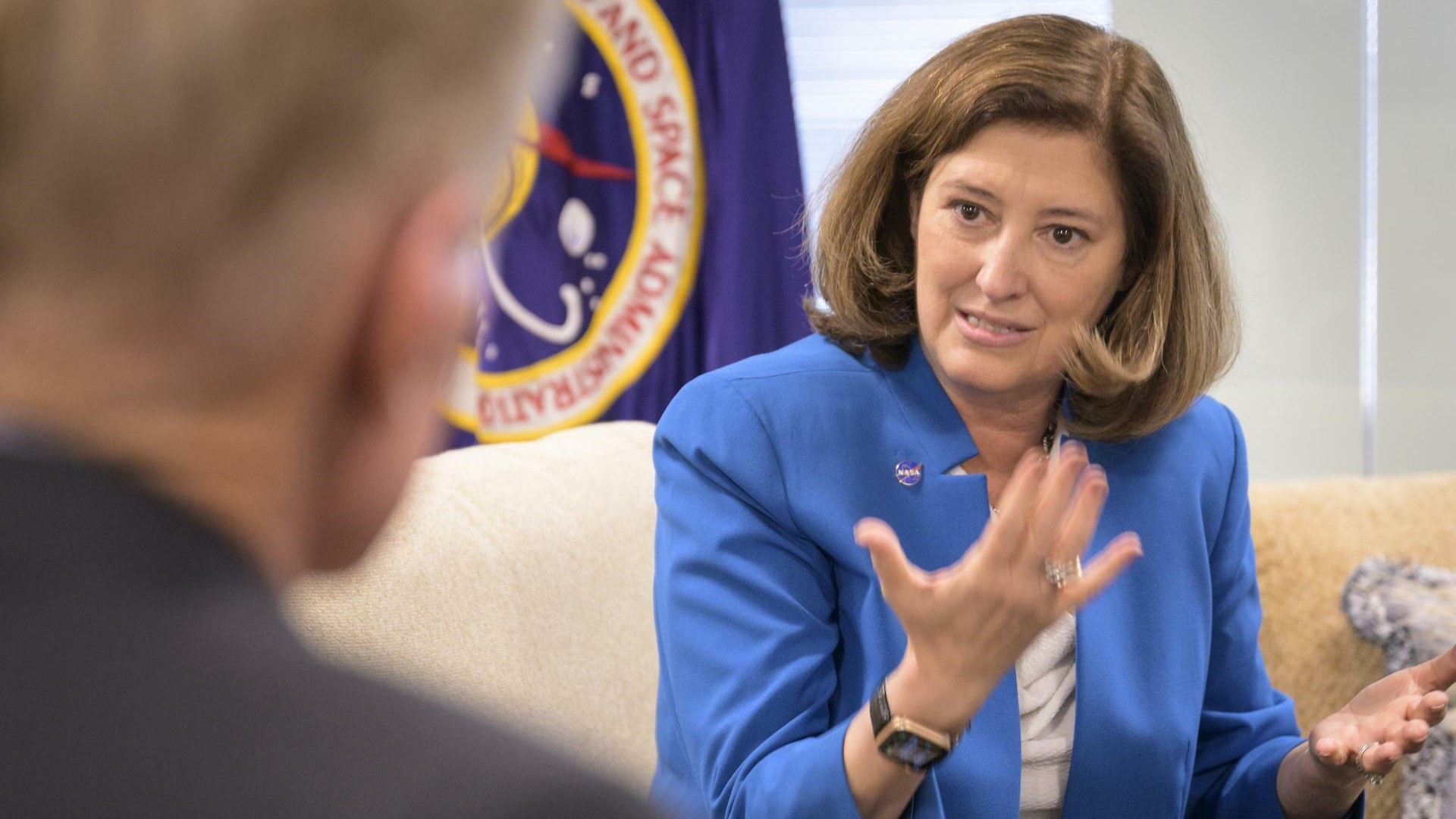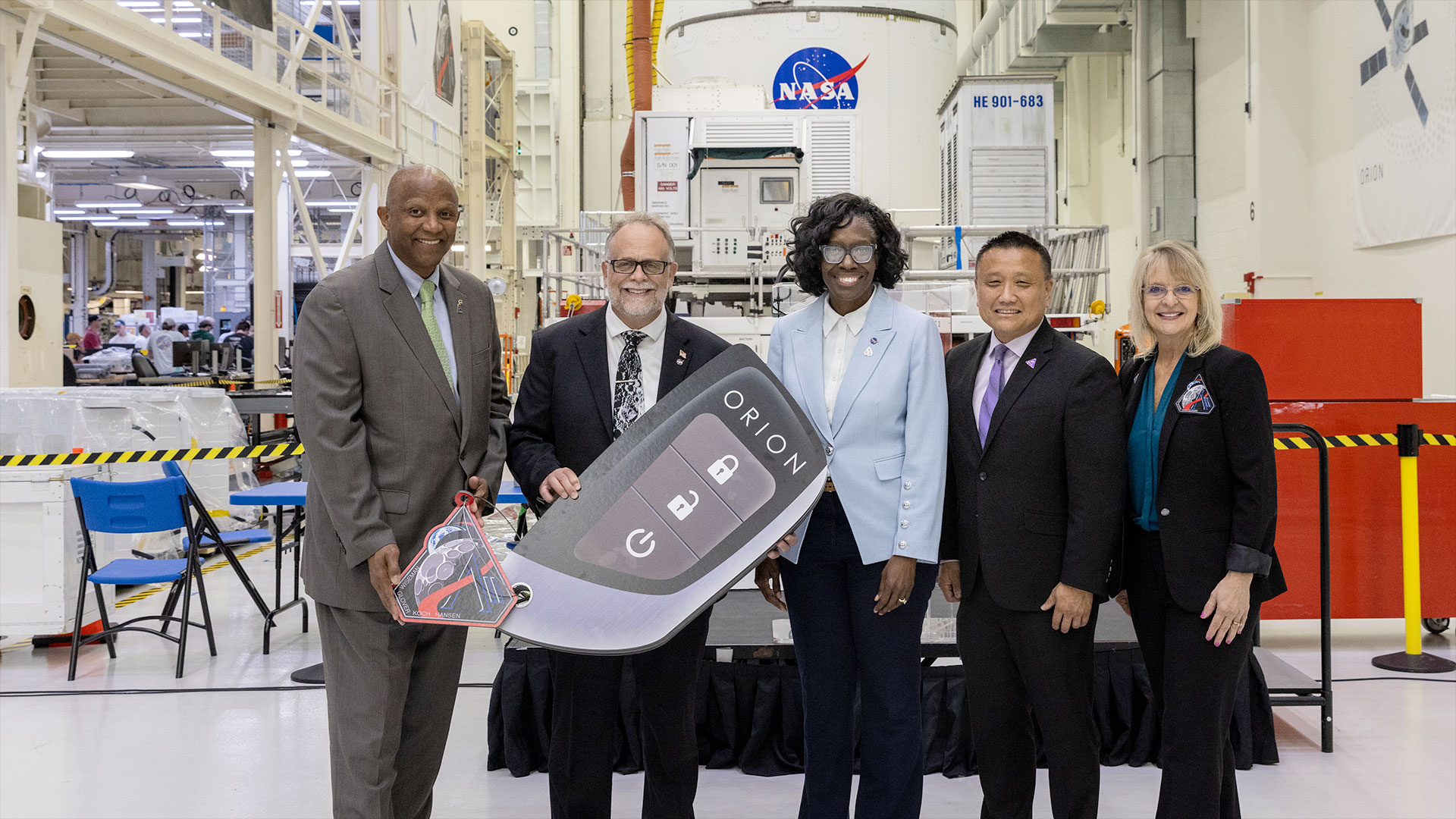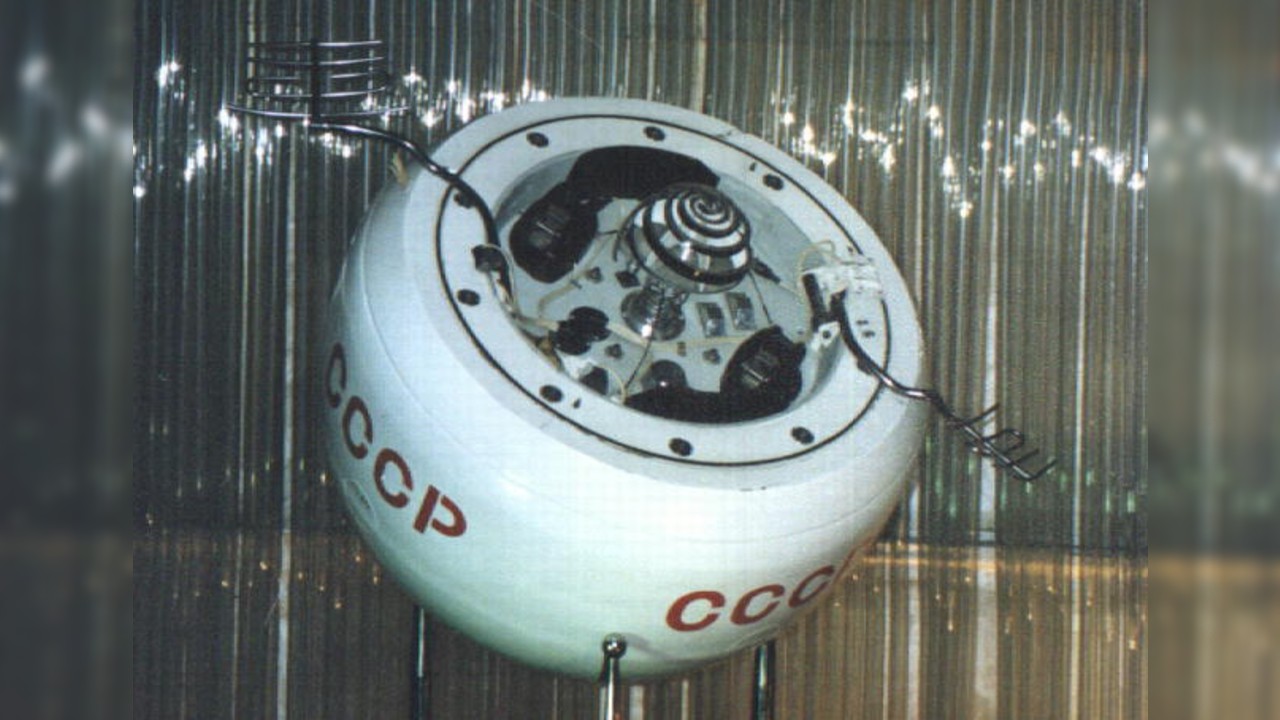Mars Trip Proposed for Space Shuttles
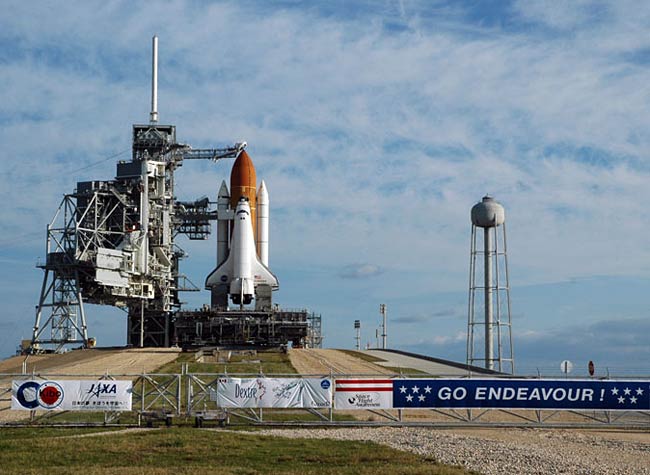
This story was updated at 1:01 p.m. EST, Jan. 21.
The former CEO of a rocket launch firm has proposed an audacious plan to send astronauts on a one-way trek to Mars using a pair of tethered U.S. space shuttles that would parachute to the Martian surface.
Inventor Eric Knight, a former CEO of the rocket firm UP Aerospace, detailed the plan — which he's billed "Mars on a Shoestring" — in a thought exercise designed to encourage unconventional thinking for future human spaceflight.
"My thought paper is a mental exercise to encourage new ideas," Knight told SPACE.com in an e-mail interview. "I also hope it spurs a re-evaluation of the timeline for human exploration of Mars. Twenty years seems like an eternity, given that we were able to get to the moon in less than 10 years — and we were essentially doing so 'from scratch.'"
NASA's current plan for future human spaceflight includes retiring its three aging space shuttles — Discovery, Atlantis and Endeavour — in 2010, launching their capsule-based successor Orion by 2015 and returning astronauts to the moon by 2020. Any push to Mars would come in the decades that followed under the NASA vision.
Why wait?
Knight posted his proposal to the Web site of his Connecticut-based firm Remarkable Technologies, Inc., where he serves as president. The interplanetary pitch goes like this:
Instead of mothballing NASA's aging shuttle fleet in 2010, two of the orbiters could be launched with SpaceHab's Research Double Modules in their respective cargo bays for living space.
Get the Space.com Newsletter
Breaking space news, the latest updates on rocket launches, skywatching events and more!
The two shuttles would be connected in orbit — cargo bay to cargo bay - by a truss outfitted with a central rocket engine to provide the thrust necessary to leave Earth orbit. An inflatable connecting corridor between the two shuttle airlocks would provide astronaut access between the linked spacecraft.
Knight likens his plan as an evolved version of the Mars Direct plan advocated by Mars Society President Robert Zubrin, which also detailed a mission that used tethered modules and hinged on a crew's ability to generate their return fuel once they arrived at Mars.
Once underway, the spent rocket engine and its support truss could be jettisoned, and the connecting corridor and a cable tether linking the two space shuttles to extended outward a few hundred feet. The shuttles would then fire their thrusters in concert to enter a gentle spin that could provide slight gravity for the months-long flight through interplanetary space.
NASA's space shuttles aren't built to support crews for longer than just over a couple weeks at a time, though Knight suggests that regenerative life support systems like those recently delivered to the International Space Station could do the trick. Hydroponic gardens inside the living modules would boost crew food supplies in the plan. Periodic pit stops to resupply fuel and other expendables would be required along the way, necessitating some sort of freighter assist, he adds.
Landing challenge
But it's once the cobbled-together Mars ship arrives at the red planet that Knight's proposal takes a novel turn. Since NASA's 100-ton space shuttles are designed to glide through Earth's atmosphere during landings, they won't be able to handle well in the thinner atmosphere of Mars.
Knight suggests using massive parachutes.
"What I propose is the development of a very large parachute system that would be stowed in each of the orbiter's payload bays," he writes in the paper. "Each orbiter would then enter the Mars atmosphere and descend ballistically (like Apollo and Soyuz capsules), deploy its parachute system, and land wheels down with surely a pretty good thump — even with the planet's gravity just 38 percent of Earth's."
Knight's proposal is chiefly a one-way mission, which would call for a unique cadre of astronaut pioneers willing to become the first settlers on Mars. More likely, he surmises, the mission could be a pathfinder that would set the stage for the later arrival of a relief crew aboard dedicated Marscraft capable of return trips.
There is no return plan and there are substantial challenges that remain to be solved. For one, NASA's space shuttles aren't shielded against the severe radiation environment, so countermeasures would have to be developed.
But Knight intends his proposal to serve not as a technical blueprint, but as a springboard for more creative ideas for the future of human spaceflight.
"I'm hoping my thought paper inspires a new wave of creative thinking in regards to travel to Mars — and beyond," Knight said. "That's my hope. That's my goal."
Join our Space Forums to keep talking space on the latest missions, night sky and more! And if you have a news tip, correction or comment, let us know at: community@space.com.

Tariq is the Editor-in-Chief of Space.com and joined the team in 2001, first as an intern and staff writer, and later as an editor. He covers human spaceflight, exploration and space science, as well as skywatching and entertainment. He became Space.com's Managing Editor in 2009 and Editor-in-Chief in 2019. Before joining Space.com, Tariq was a staff reporter for The Los Angeles Times covering education and city beats in La Habra, Fullerton and Huntington Beach. In October 2022, Tariq received the Harry Kolcum Award for excellence in space reporting from the National Space Club Florida Committee. He is also an Eagle Scout (yes, he has the Space Exploration merit badge) and went to Space Camp four times as a kid and a fifth time as an adult. He has journalism degrees from the University of Southern California and New York University. You can find Tariq at Space.com and as the co-host to the This Week In Space podcast with space historian Rod Pyle on the TWiT network. To see his latest project, you can follow Tariq on Twitter @tariqjmalik.
